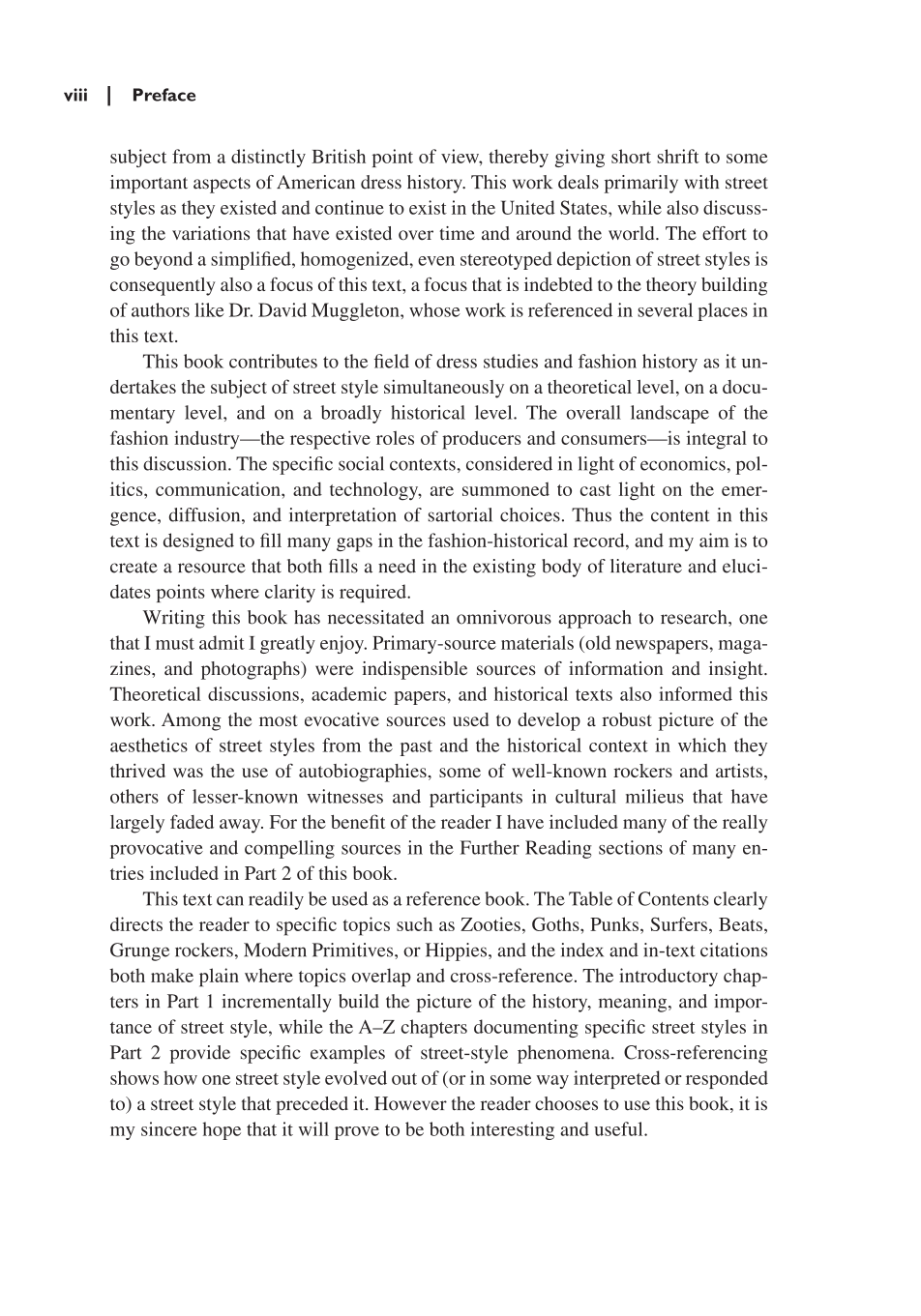viii
|
Preface
subject from a distinctly British point of view, thereby giving short shrift to some
important aspects of American dress history. This work deals primarily with street
styles as they existed and continue to exist in the United States, while also discuss-
ing the variations that have existed over time and around the world. The effort to
go beyond a simplified, homogenized, even stereotyped depiction of street styles is
consequently also a focus of this text, a focus that is indebted to the theory building
of authors like Dr. David Muggleton, whose work is referenced in several places in
this text.
This book contributes to the field of dress studies and fashion history as it un-
dertakes the subject of street style simultaneously on a theoretical level, on a docu-
mentary level, and on a broadly historical level. The overall landscape of the
fashion industry—the respective roles of producers and consumers—is integral to
this discussion. The specific social contexts, considered in light of economics, pol-
itics, communication, and technology, are summoned to cast light on the emer-
gence, diffusion, and interpretation of sartorial choices. Thus the content in this
text is designed to fill many gaps in the fashion-historical record, and my aim is to
create a resource that both fills a need in the existing body of literature and eluci-
dates points where clarity is required.
Writing this book has necessitated an omnivorous approach to research, one
that I must admit I greatly enjoy. Primary-source materials (old newspapers, maga-
zines, and photographs) were indispensible sources of information and insight.
Theoretical discussions, academic papers, and historical texts also informed this
work. Among the most evocative sources used to develop a robust picture of the
aesthetics of street styles from the past and the historical context in which they
thrived was the use of autobiographies, some of well-known rockers and artists,
others of lesser-known witnesses and participants in cultural milieus that have
largely faded away. For the benefit of the reader I have included many of the really
provocative and compelling sources in the Further Reading sections of many en-
tries included in Part 2 of this book.
This text can readily be used as a reference book. The Table of Contents clearly
directs the reader to specific topics such as Zooties, Goths, Punks, Surfers, Beats,
Grunge rockers, Modern Primitives, or Hippies, and the index and in-text citations
both make plain where topics overlap and cross-reference. The introductory chap-
ters in Part 1 incrementally build the picture of the history, meaning, and impor-
tance of street style, while the A–Z chapters documenting specific street styles in
Part 2 provide specific examples of street-style phenomena. Cross-referencing
shows how one street style evolved out of (or in some way interpreted or responded
to) a street style that preceded it. However the reader chooses to use this book, it is
my sincere hope that it will prove to be both interesting and useful.










































































































































































































































































































































































































